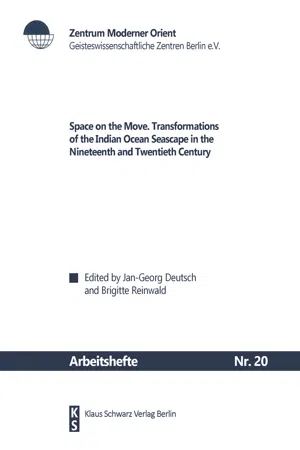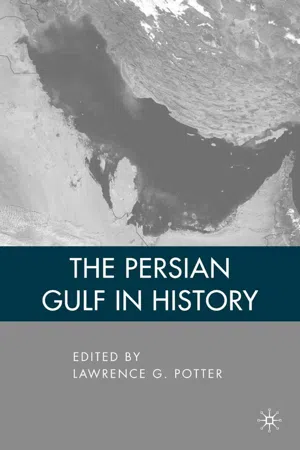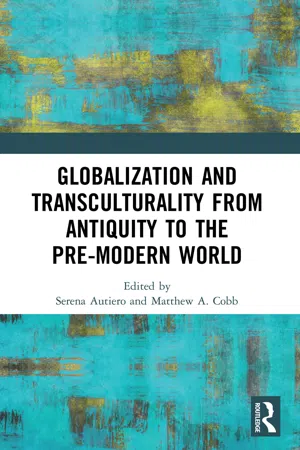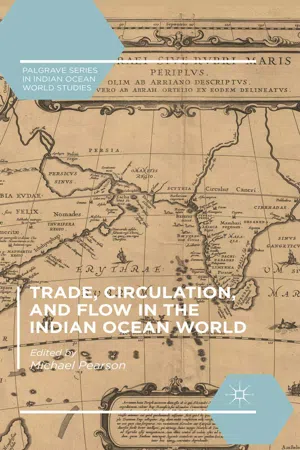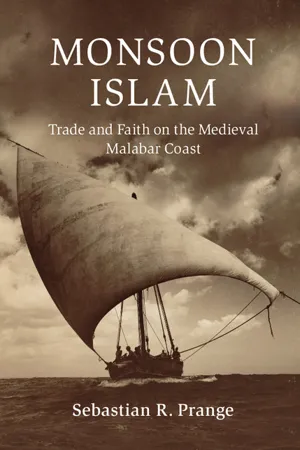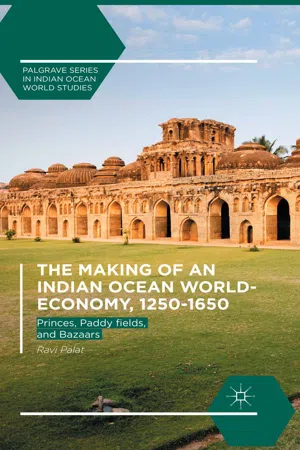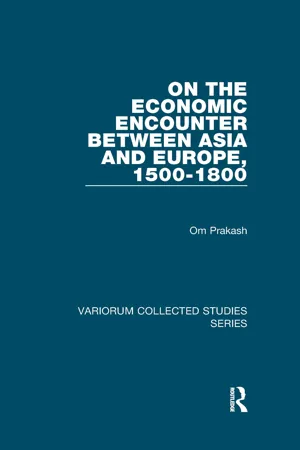History
Indian Ocean Trade Cultural Impact
The Indian Ocean Trade had a significant cultural impact on the regions it connected. It facilitated the exchange of ideas, religions, languages, and technologies between Africa, Asia, and Europe. This cultural exchange contributed to the development of new cultural practices and the spread of existing ones.
Written by Perlego with AI-assistance
Related key terms
1 of 5
7 Key excerpts on "Indian Ocean Trade Cultural Impact"
- eBook - PDF
- Jan G. Deutsch, Brigitte Reinwald, Jan G. Deutsch, Brigitte Reinwald(Authors)
- 2021(Publication Date)
- Klaus Schwarz Verlag(Publisher)
One of the key questions is, to reiterate Cooper's argument, the ex-tent to which the historical, social and cultural space of the Indian Ocean has been reorganised and redefined in the context of the further integration of the region into the capitalist world economy, colonial expansion, and the emer-gence of the post-colonial nation state. This obviously involves measuring the impact of technological and infrastructural transformations, accelerated urbanisation and the rapid expansion of new means of mass communication on the one hand, and of political and juridical interventions aimed at control-ling and regulating the movement of humans, goods and ideas on the other. Perspectives on the Making of an Indian Ocean Seascape 15 The four articles presented here examine specific contours and dynamics of this process that is characterised by expanding incorporation and simultane-ous differentiation (see Ahuja). Although the evidence is drawn from diver-gent fields of investigation - South Arabian migration versus restrictive colo-nial immigration laws (Hartwig), social infrastructures and networks of South Asian steamship labour milieus (Ahuja), a Zanzibari micro-locality's linkage with the global drug trade (Peutsch), and the discourse on Zanzibari identity in conflicting projects of citizenship (Bromber) these case studies converge in one basic point. By focusing on agency, they work at the intersections of macro-structural frames and hegemonic power scenarios, and (trans-)local processes of adaptation and re-organisation. Thus the findings, which are briefly discussed in the following section, highlight different strands of the transforming historical, social, and imaginary linkages of this 'space on the move' that is the Indian Ocean region. - eBook - PDF
- L. Potter(Author)
- 2009(Publication Date)
- Palgrave Macmillan(Publisher)
For thousands of years, seafarers, merchants, artisans, missionaries, and adventurers traded their goods, technologies, ideas, and faiths from one side of the ocean to the other. No wonder then, that when we travel from the farthest corner of southeast Arabia to other parts of the Indian Ocean, much of what we experience seems more than a little familiar. From Penang (in modern Malaysia) to Pemba island (near Zanzibar), we can observe in a boat, a door, a window, headgear, jewellery, a face, or a song, traces of a shared history that resonate to the present day. This paper aims to show that despite the ethnic diversity of the people of the Indian Ocean, there existed among them a sense of belonging to a common Indian Ocean culture. 164 M . R e d h a B h ac k e r Cultural Identity of the Indian Ocean If we consider cultural spheres of influence, and view oceans as continents, we are able to make sense of the empirical observations across millennia that the coastal peoples of the Indian Ocean shared a greater cultural identity with one another than they did with the hinterland inhabitants of their own landmasses. The Ichthyophagi, or “Fish- Eaters,” of the Periplus in the first century A.D. inhabited thousands of kilometers, from the Egyptian and Arabian shoreline and islands in the Red Sea, to southern Arabia and the island of Masirah (Oman) and beyond. 2 They survived in narrow inlets gather- ing shellfish, catching fish, grinding it into meal for animals and living in shelters con- structed of whalebone in the same way as their cousins did in ancient Gedrosia, on the Makran coast, as observed by Nearchos in 325 B.C. 3 The degree of cultural diversity of coastal communities is striking even at this early period. The classical sources describe different tribes speaking languages (some more than one) each partly or wholly different from the other. - Serena Autiero, Matthew Adam Cobb, Serena Autiero, Matthew Adam Cobb(Authors)
- 2021(Publication Date)
- Routledge(Publisher)
Trade, Commerce and the State in the Roman World . Oxford: Oxford University Press.Passage contains an image
Matthew A. Cobb8 Mediterranean goods in an Indian context
The use of transcultural theory for the study of the ancient Indian Ocean world *
DOI: 10.4324/9781003096269-12Introduction
The recent growth of interest in trade and interconnectivity across the ancient Afro-Eurasian world (c . 300 BCE – 700 CE) has been spurred on by a number of factors. One of these is evidential: new archaeological discoveries have been made at a range of sites across the globe, while more epigraphic, papyrological and numismatic studies have also been undertaken.1 A second major factor is the development of scholarly interest in global history and the history of globalization, which are both concerned with how things, people and ideas circulated, as well as how individuals and groups within different societies responded to these movements and exchanges (including socio-economic, political and cultural responses).2These developments have spurred engagement with a whole range of issues, including the traditional concerns of long-distance trade, such as networks, nodes, organization, financing, sailing technology, the goods exchanged, and the merchants and sailors involved. There has also been an expanded interest into how this trade was integrated into wider socio-economic activity, such as the production, cultivation and reworking of items of exchange, and habits of consumption.3 Cultural responses have likewise received greater attention and can be analysed by utilizing concepts connected to globalization and glocalization, such as ‘standardization’ (groups sharing similar ideas, practices and technologies), ‘cultural homogenization’ (the transmission, mutation, adoption and adaptation of foreign concepts), ‘cultural heterogeneity’ (differences resulting from these exchanges of ideas, products, and practices), and the ‘re-embedding of local culture’ (reactions to external influences that reinforce the purportedly traditional).4- Michael Pearson(Author)
- 2016(Publication Date)
- Palgrave Macmillan(Publisher)
The product and its trade networks may have been at the farthest eastern end of the Indian Ocean, but they were nevertheless linked to the wider Indian Ocean world . . . , the history of the massoi trade provides further support for the view that the Indian Ocean forms a meaningful unity.” Thus, this study by a very senior historian of Southeast Asia answers one of our central questions, that is whether or not there is indeed an Indian Ocean World with enough commonalities to be susceptible of study. Raden Fernando’s chapter is similarly revisionist. He challenges the usual view of trade in Southeast Asia during the VOC (Dutch East India Company) period, when older studies depicted this European trading company exercising a near-hegemonic control over all trade in the archipelago. Fernando successfully disentangles long-distance and local trade, basing his empirical analysis on the port records in Melaka. His laborious compilation of data show that local trade in fact continued to flourish well into the eighteenth century. The traders were a heterogeneous lot: Javanese, Malay, Indian, Chinese, Armenian, and European. This modest and exemplary study contributes to a bet- ter understanding of the impact of the European trading companies in the early modern Indian Ocean, the period before capitalism. The matter of inland versus maritime, how far inland does the maritime historian need to go, is raised in Rila Mukherjee’s chap- ter. Mukherjee writes on two contrasting cities, Kasimbazar and Chandernagore: ostensibly one is inland, the other maritime. However, it is clear that in fact neither is wholly defined in this way; rather both mingle terrestrial and aquatic features. This encourages us to avoid too rigid a binary between land and sea. It is much more complicated than this! What she shows is that water “worlds” should be under- stood to include noncoastal areas via the inland movement of oceanic- eBook - PDF
Monsoon Islam
Trade and Faith on the Medieval Malabar Coast
- Sebastian R. Prange(Author)
- 2018(Publication Date)
- Cambridge University Press(Publisher)
In doing so, this book responds to a call to move beyond static taxonomies by tra- cing alternative geographies demarcated by the mobilities of historical 26 See for instance, P. Risso, “Cross-Cultural Perceptions of Piracy: Maritime Violence in the Western Indian Ocean and Persian Gulf Region during a Long Eighteenth Century”, Journal of World History 12:2 (2001), 293–319; R.E. Margariti, “Mercantile Networks, Port Cities, and ‘Pirate’ States: Conflict and Competition in the Indian Ocean World of Trade before the Sixteenth Century”, Journal of the Economic and Social History of the Orient 51:4 (2008), 543–577; S.R. Prange, “The Contested Sea: Regimes of Maritime Violence in the Pre-Modern Indian Ocean”, Journal of Early Modern History 17:1 (2013), 9–33. 27 See S.R. Prange, “A Trade of No Dishonor: Piracy, Commerce, and Community in the Western Indian Ocean, Twelfth to Sixteenth Century”, American Historical Review 116:5 (2011), 1269–1293. 28 For discussions of Muslim pilgrimage networks in the Indian Ocean, see for instance, M.N. Pearson, Pious Passengers: The Hajj in Earlier Times (London: Hurst & Co., 1994); E. Tagliacozzo and S.M. Toorawa (eds.), The Hajj: Pilgrimage in Islam (Cambridge: Cambridge University Press, 2016). Introduction 12 12 actors. 29 Akin to Sheldon Pollock’s notion of a “Sanskrit cosmopolis” as a world of Indic literary and political culture that linked together South and Southeast Asia during the first millennium of the Common Era, the concept of Monsoon Islam can integrate different aspects of medi- eval Indian Ocean history into a broader narrative. 30 Be it the invocation of a Persian sultan in Friday prayers on the Indian coast, East African scholars giving lessons in Islamic law to South Asian students in Mecca, or mosques in Sumatra that look like South Indian temples, Monsoon Islam is the bigger picture that emerges from these finer brushstrokes. - eBook - PDF
The Making of an Indian Ocean World-Economy, 1250–1650
Princes, Paddy fields, and Bazaars
- Ravi Palat(Author)
- 2015(Publication Date)
- Palgrave Macmillan(Publisher)
Introduction Toward a Framework to Debate World History: Bringing South India and the Indian Ocean Back In One of the ironies of recent historical writing is that South India has slipped out of discussions of world historical change, despite it being the source of the spices that reportedly drove Europeans to launch “exploratory” voyages across the seas and a major production site of the most widely traded manufactured good before the industrial age—cotton textiles. Trade across the Indian Ocean—the “old- est of the seas in history,” as Michael Pearson (2003:3) rightly calls it—predated commerce across all other oceans. And yet, as the ori- gins of the modern world are being debated and the factors that were once held to have been peculiar to Europe—private property in land, free markets, rule of law, among others—are now seen to have oper- ated elsewhere as well, South India rarely figures in contemporary debates on comparative world history. The excision of South India from these discussions is perhaps because the source materials for the region are primarily stone and copper inscriptions, a handful of literary texts, and a few travel- ers’ accounts. There are no registers of farm expenses and sales, tax registers, account books of merchants with costs, prices, and asso- ciated trading practices, or production schedules of weaving house- holds, records of mints, export and import figures: none of the staple sources of economic history. Consequently, much of the literature on the political economy of South India has revolved around notions of ritual polities, sacred kingships, and the “segmentary state” (Stein 1980, 1985a, 1989). Yet these inscriptions also contain considerable information about land tenures, expansion of cultivation, rates of 2 The Making of an Indian Ocean World-Economy taxation, administrative hierarchies, and social classes. - Om Prakash(Author)
- 2023(Publication Date)
- Routledge(Publisher)
II India in the Indian Ocean Trading Network on the Eve of the Europeans' Arrival in the Asian Seas DOI: 10.4324/9781003420750-2Among the historic consequences of the discovery by the Portuguese at the end of the 15th century of the all-water route to the East Indies via the Cape of Good Hope was the overcoming of the transport technology barrier to the growth of trade between Asia and Europe. The volume of this trade was no longer subject to the capacity constraint imposed by the availability of pack animals and river boats in the Middle East. Also, it was only after the discovery of the Cape route that the procurement of Asian goods as well as their transportation to Europe was organised by the Europeans themselves, who had travelled to the East in any number for the first time. What kind of trading network did the Portuguese find in operation on their arrival in the Indian Ocean? This paper analyses the central elements of this network from the vantage point of India, which was at the centre of the Portuguese - and later of the other Europeans’ trading activities in Asia,An analysis of the structure and the mechanics of the early modem Indian Ocean trade, alternatively referred to as Asian trade, ought perhaps to start with a recognition of the simple fact that this trade transgressed the boundaries of both the Indian Ocean as well as those of Asia. While in the east, it intruded prominently into the South China Sea, in the west, it embraced maritime trade with East Africa. Traditionally, the great arc of Asian trade included the Persian Gulf and the Red Sea in the northwest. The principal natural divisions of this huge area were the Arabian Sea, the Bay of Bengal and the South China Sea. Within each of these zones, there were important blocks of ports across which a large amount of trade had traditionally been carried on. The western or the Arabian Sea zone included ports in the Persian Gulf, the Red Sea, those on the East African coast and on the west coast of India. The Bay of Bengal network included ports in Sri Lanka, the Coromandel coast, Bengal, Burma, Thailand, Malaya and Acheh in Sumatra. Ports such as Canton and Zaiton in the South China Sea had extensive contacts both with the Indonesian ports as well as with ports in the straits of Malacca. Within each of these zones, there were also clearly identifiable sub-zones. To take an example, in the west, the ports of Aden, Hormuz, Cambay and Calicut formed one such sub-zone, while those of Kilwa, Mogadishu, Aden and Jiddah constituted another. Needless to emphasise, in terms of the ability of different constituents of a given zone to put important tradeable goods on the market, for which there was adequate demand elsewhere in the zone, there was a very definitive basis for trade within each of the zones. Such a basis also existed to an important degree across zones leading to the creation of significant long-distance trade flows in the Indian Ocean and beyond. By far the longest distance was covered by the route that connected Aden to Canton traversing a very large part of the total area covered by the great arc of Asian trade. There is evidence to suggest that this route was in regular use at least from the 7th century on. The principal group which had initiated trade on the route was the Persian merchants who had, however, been supplanted by and large by Arab merchants since about the 9th century on. The principal stops on the way were either Cambay or Calicut on the Indian west coast and a port such as Palembang in Sumatra. It would seem that sometime during the 12th century, Chinese junks also began operating on this route. There is evidence that the Chinese merchants established commercial contacts with places such as Sri Lanka, Quilon on the Malabar coast and with Hormuz in the Persian Gulf. The Chinese participation in trade on this route would appear to have reached important levels by the early years of the 15th
Index pages curate the most relevant extracts from our library of academic textbooks. They’ve been created using an in-house natural language model (NLM), each adding context and meaning to key research topics.
